LAHORE: Even compared to the unchartered territories of the COVID years, 2022 was a wild ride for Pakistan and the global economy. Two years into the pandemic, the global economy gradually gained pace. Factories restarted, schools opened back to full capacity, small vendors finally got business again and the engine of modern global capitalism was reignited.
While this was the world we all longed for at the peak of the Covid lockdown in 2020, the reopening of the global economy brought with it a raft of financial challenges. A resurgence of demand in the beginning of 2022 pushed up global commodity prices, inflation, and ultimately, towards the end we find ourselves talking about a recession.
While the nature of the crisis faced by the international economy has changed at the end of the year, Pakistan ultimately is faced with similar challenges to those confronting it at the start of the year.
The year hardly had any winners, but, for Pakistan, the situation was compounded by the added toxic ingredient of political uncertainty.
The biggest crisis in one word: Oil
One of the biggest sources of economic shock to the world was global energy prices. Many would argue that, for Pakistan, it was the single biggest – particularly when you add all the politics of oil prices.
As economic activities gained momentum after lockdown was lifted in the remaining countries of the world, the international market for oil also experienced a surge in prices as demand increased. Below is the graph of oil prices per barrel in the international market. The price shock was first observed in the last quarter of 2021 as demand for oil increased, and kept increasing at an increasing rate.
But then came the biggest extraneous factor that threw everything off: In March Russia, the biggest provider of energy to Europe, invaded Ukraine, which is also one of the biggest providers of grains to the world.
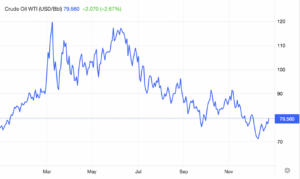
Source: Trading economics
Consequently, Pakistan also received its first shock in the last quarter of 2021, pushed by the fundamentals of the global market, and greeted 2022 at Rs 145 per litre for petrol. It seemed unreal back then. But little did we know what was in store for us would make Rs 145 look like the good old days. More on that later.
Fast forward to February 24, 2022 when Russian troops invaded Ukraine, opening the chapter to one of the great crises of modern history (interestingly, Pakistan’s then prime minister Imran Khan faced the awkwardness of being in Moscow the day this happened). The United States and its European allies imposed sanctions and embargoes on Russia, the second largest oil producer in the world, and the energy supplier to Europe’s biggest economies. Europe basically ran on Russian oil and gas. Now they wanted to get it from elsewhere.
The effect of the threat can be seen in the graph above when the crude oil prices in the international market increased steeply to nearly $123 per barrel by the beginning of March, from about $96 the night before the invasion – indicating a 33% increase in just a couple of weeks. The hike represented the highest price of crude oil in the last 14 years.
The timing could not have been worse for Pakistan, where, compounding the crisis, petrol prices became the focal point for populist politics. In the end of February, when the world was facing a massive oil price shock, former PM Khan slashed petrol prices by Rs 10 per litre, removing the petrol development levy (PDL), the essential tax on oil. But, more importantly, he imposed a price cap on prices for the rest of the financial year. Why? In short, the subsidy was a populist measure in the wake of a looming vote of no confidence. The subsidy would prove to be a political move that was difficult for the incoming government to undo. And it would cost Pakistan hundreds of billions of rupees and send the fiscal deficit into orbit.
Khan still lost the vote. But he left what the incoming government would describe as political landmines. The biggest and most explosive of the lot: the petrol price subsidy.
Subsidies, politics, and the IMF
The incoming government and Finance Minister Miftah Ismail did not have the political capital to remove the cap and raise prices immediately after coming into power. The delay was crippling. Foreign exchange reserves continued to fall and consumption of fuel rose. The current account deficit went haywire and the IMF programme, already off track due to broken commitments, became unavailable and, with it, so did linked funding from other multilateral and bilateral donors. The single biggest stick point was removing the fuel subsidies, without which the programme would not come back.
With the bells of default ringing loudly, taking tough economic decisions became unavoidable. A month and half of delaying the move meant the government had to pass on the cost in a short period of time. The first raise, at the end of May, was a whopping 20%. The next one a week later was another Rs 30 per litre. In a matter of weeks the price of petrol stood at Rs 237 per litre – and diesel at Rs 247 – up from the 150 that Khan’s populist move had frozen it at.
The IMF programme came back on track, but the burst of raises wreaked havoc, and were the biggest factor for a 196 Consumer Price Index (CPI) in September, indicating a 12% increase since April 2022.
The move was necessary, but was costing the new government dearly in terms of politics, with a resurgent Khan riling up the masses. Global prices have eased off considerably. Pakistan, however, needs to maintain domestic prices because though global prices have fallen, it needs to make up revenues in the face of falling taxes with a slowing economy.
Instead, the government replaced Ismail with the old hand of Ishaq Dar in September, who pulled the handbrake on the reforms programme and immediately announced a slashing of prices. He then announced another reduction a few weeks later in December. The prices were once again a bone of contention with the IMF, who wanted Pakistan to make up for lost revenues by keeping prices high despite a global dip.
That once again proved to be one of the factors that derailed the IMF programme, which stands delayed . Right back where we started. Oil, its prices and associated politics, has been the biggest burden on our economy. And whether or not we can do something about it may be answered early in 2023.
Since the start of the crisis, Khan had stressed the need to import cheaper oil from Russia. Progress on this was reported at the end of 2022 when the government announced that Russia had agreed to sell it cheaper Russian oil. Whether or not this materialises will likely be determined in January 2023, when a Russian delegation will visit Islamabad, according to Petroleum Minister Musadik Malik.
The G-7 countries have placed a price cap of $60 per barrel on Russian oil imports; Russia refuses to accept the cap.
In a nutshell: Pakistan cannot pay higher or risk the wrath of western countries; Russia may not want to sell at a lower price. January could prove pivotal to set the tone for 2023, and whether Pakistan can escape the deadly oil-fuelled crises of 2022.
Exploding (dual) exchange rates
Amidst global intrigue, Pakistan had its own fair share of political upheaval in 2022. Aside from the government change, Pakistan has had three finance ministers in six months. The real cost of the political uncertainty was borne by the economy.
The exchange rate, which is determined by economic fundamentals and sentiment, dwindled throughout the year.
We began the year at Rs 176 to the US dollar. We closed it at Rs 226, after a brief period of it touching Rs 240. But that’s the official rate. In the real world, dollars are still available at around Rs 240 if you’re lucky.
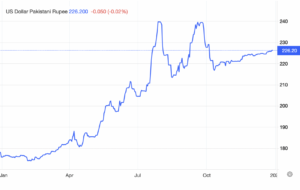
The decline in the supply of dollars and increase in its demand majorly for debt servicing and import payments depreciated the overall value of rupee by about Rs 50 against the greenback.
So meteoric was the rise at one point that the dollar rose from Rs 183 in April to Rs 240 in July. In simple terms, due to lower reserves, lesser collection of tax, import-driven consumption in the last months of Khan’s government – in a bid to inflate GDP growth numbers – there were more rupees in the economy than dollars. That’s why the economy came to near defaulting and the rupee depreciated by 33%.
The State Bank’s liquid foreign reserves for the year end close at $5.8 billion, the lowest since 2014. With a stalled IMF programme and no clarity on where the external financing will come from, Pakistan has tried everything to control imports, including official and unofficial bans and lengthy official procedures.
That has created two different rates for the dollar. One official, the inter-bank, and the other in the open market which is what importers use. There is always a difference between the two. But the difference today is much higher than normal, indicating a huge policy problem, indicating the currency is not being determined by market factors, as agreed with the IMF.
On and off with the IMF
Other than reducing public confidence in the rupee, the political turmoil and the subsequent replacement of finance ministers had to see a tough time with the IMF as well.
The PTI government resorted to the IMF back in 2019 and secured a $6 billion loan, but failed to fulfil the economic reforms conditions, including meeting revenue targets by increasing petrol levy (see above). Similarly, interest rates remained low relative to the overall economic situation, plateauing till March of 2022 lower than the inflation rate, which basically disincentive savings and pushed consumption. The IMF programme faced delays.
It took months, and painful reforms, to bring the IMF programme on track by August 2022. Default fears subsided for the time being as an IMF bailout of $1.17 billion was secured by the end of August with two reviews – the seventh and eighth – cleared in one go. Moreover, it was the time when Pakistan also projected to secure $38 billion through June 2023, enough to cover the $31 billion cover it needed for imports and other necessary obligations. Immediately, the KSE index projected a 1.3% increase and many Middle Eastern investors showed interest in Pakistan.
But the breather was short-lived. With Dar’s return as finance minister – the sixth finance minister in four years and third in six months – Pakistan and the IMF came to an impasse again over the ninth review. There were multiple reasons – and one of them involved yet another extraneous challenge thrown at Pakistan: historic floods that wreaked havoc across the country in August 2022.
The IMF and Pakistan developed differences over the damages caused by floods (discussed later in the story) that pushed the IMF review meeting scheduled for early December. According to sources, the disagreement was on how much of the reconstruction should be booked in the next budget and other associated issues. .
With the IMF money stuck, no a major chunk of promised financial help from friendly countries is yet to materialise, including the $3 billion financing that Dar had claimed would arrive in December. Pakistan has repaid $1 billion Sukuk bonds three days ahead of its maturity, which should have put to bed fears of default. But the future still doesn’t look too bright: According to PBS, there is no improvement in the foreign exchange reserves from July to November due to a fall in exports. The dollar outflow was controlled by limiting the Letter of Credit (LCs) for a good last five months of 2022 but the reserves dropped to its lowest $5.8 billion, the lowest since 2014, with an import cover of just 1.16 months. The figure essentially means that the economy does not even have two months before it reaches the state of default.
Historic floods
Amidst the on-going fiscal crisis, there was the added pressure of unprecedented floods that submerged a huge portion of Pakistan’s territory and affected 33 million people. The human cost was catastrophic, but it also added to the ongoing economic stress, increasing costs and slowing down growth.
According to the World Bank, the total damages and economic losses caused by the floods stood at over $30 billion, of which agriculture, which contributes a quarter to the overall economy, has taken a hit of $5 billion. Categorically, 70% of onion, rice and corn harvest was damaged which affected the supply and increased prices. Some breakdown is as follows: prices of pulses increased 114%, prices of onions increased by 90% and 81% increased was noted types of ghee and cooking oil, according to the Pakistan Bureau of Statistics.
The textile sector, which makes up to 50-60% of Pakistan’s exports also suffered tremendously. One-third of the cotton crop was damaged, causing 100 small fabric and garment producing mills to shut down. The overall impact on the was a slow-down in growth of about 2%.
The rebuilding and relief costs estimated by the World Bank is about $16 billion, of which, as of December, only $4 billion has been received.
What the experts say
If you’ve read the piece till now, you’re probably sulking in depression, and the next year doesn’t promise any cure either, experts believe.
“Situation is very difficult. World economic crises are going to seep into the internal crisis and only widen the financing gaps. We don’t have the set up for a good policy response, otherwise we wouldn’t have to resort to the IMF 23 times,” Dr Nadeem ul Haque, Vice Chancellor PIDE, told Profit.
“Inflation pressure is going to remain not only because of supply issues but also because of the uncertainty around the rupee. Similarly, not much relief for the export sector is expected either because of the pressure on imports, the government might not be able to liberalise as needed for the industries,” Dr Vaqar Ahmed, Executive Director of SDPI, said.
“These crises are the result of long-standing issues: export-oriented sectors being neglected to support import-substitution via an artificially strong rupee; extremely poor taxation that burdens the formal sector too heavily and effectively subsidies investments in domestic sectors like real estate; rampant electricity theft. Change will come when the nation wakes up to these challenges, and demands that our leaders do better. One hopes that 2023 is the year we start that journey,” according Dr Ali Hasanain, Associate Professor, LUMS.




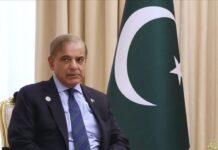

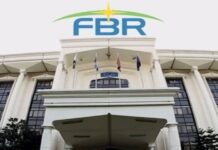














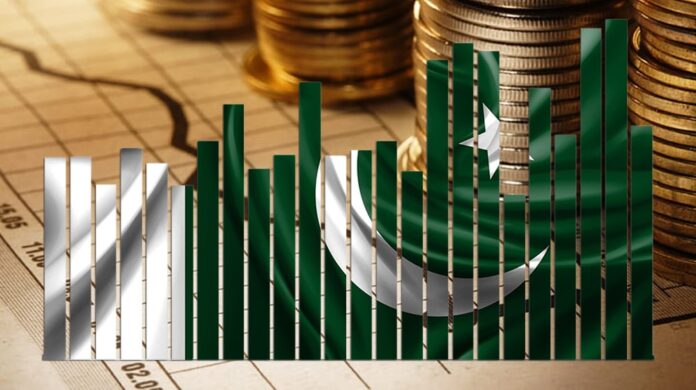




excellent and accurate essay.